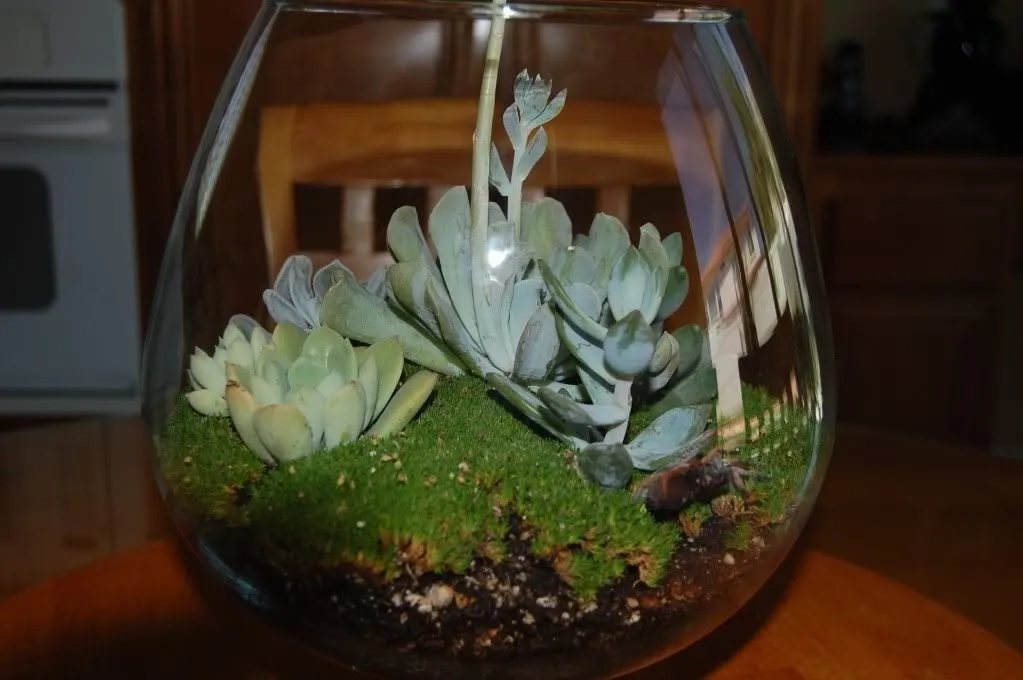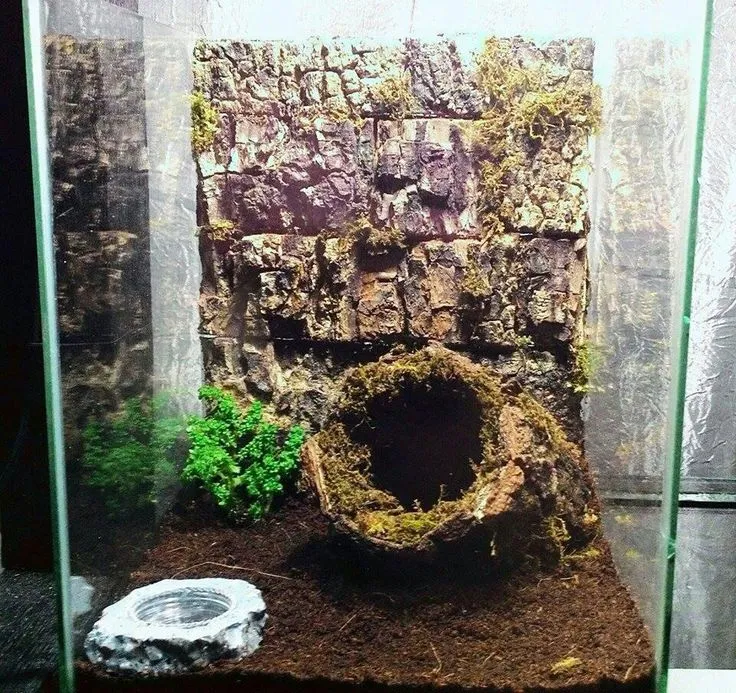Choosing the Best Tarantula Tank
Bringing a tarantula into your home is an exciting experience. However, before you welcome your eight-legged friend, you’ll need to ensure you have the proper habitat. Choosing the best tarantula tank is crucial for your pet’s health, happiness, and overall well-being. This comprehensive guide will walk you through every aspect of selecting the ideal tank, from size and material to ventilation and decor. Making the right choices will provide your tarantula with a safe, comfortable, and enriching environment, setting the stage for a successful and rewarding pet ownership experience. The right tank isn’t just a container, it’s a home. When selecting a tank, consider your tarantula’s species, size, and specific needs. This will help you narrow down the options and make an informed decision.
Tank Size Matters
One of the most critical factors in selecting a tarantula tank is the size. A tank that’s too small will restrict your tarantula’s movement and may lead to stress, while a tank that’s too large can make it difficult for your pet to find food and feel secure. As a general rule, the tank’s width should be at least twice the tarantula’s leg span, and the length should be at least the same. For terrestrial species, height is less critical, but arboreal species will need a tank that is taller to accommodate their climbing habits. It’s always better to err on the side of a larger tank, especially as your tarantula grows. This provides ample space for your pet to explore, hunt, and thrive. Remember, the right tank size contributes significantly to your tarantula’s quality of life.
Selecting the Right Material

The material of your tarantula tank significantly impacts its functionality, safety, and aesthetics. There are two primary materials used for tarantula enclosures: glass and acrylic. Each has its own set of advantages and disadvantages. Glass tanks are a classic choice, offering excellent visibility and durability. They are relatively easy to clean and maintain and are readily available in various sizes and styles. However, glass tanks can be heavier than acrylic ones and may not insulate as well, potentially leading to fluctuations in temperature and humidity. Acrylic tanks, on the other hand, are lightweight, more impact-resistant, and offer superior insulation. They are also often clearer than glass, providing an unobstructed view of your pet. However, acrylic can scratch more easily, so be careful when cleaning and handling the tank. The choice between glass and acrylic will depend on your specific needs, budget, and preferences.
Glass Tanks
Glass tanks remain a popular choice for tarantula keepers. They offer the advantage of being widely available, relatively inexpensive, and provide excellent visibility. The smooth surface of glass makes it easy to clean and sanitize, which is essential for maintaining a healthy environment for your tarantula. Glass is also a durable material that can withstand regular use and handling. However, glass tanks have some drawbacks. They can be heavy, making them challenging to move and transport. Glass also doesn’t insulate as well as acrylic, which can lead to temperature fluctuations within the tank. If you choose a glass tank, consider its placement in your home to avoid direct sunlight and drafts. Properly monitoring and regulating the temperature and humidity are also important aspects to consider.
Acrylic Tanks
Acrylic tanks provide several benefits that make them a great alternative to glass. They are lightweight and easier to move around. Acrylic provides superior insulation, helping to maintain a stable temperature and humidity level. Acrylic is also often clearer than glass, offering a more unobstructed view of your tarantula. However, acrylic tanks are prone to scratching, so it’s essential to handle them with care and use soft cloths when cleaning. Acrylic tanks are also typically more expensive than glass tanks. Despite these drawbacks, the benefits of acrylic, such as their insulation properties and clarity, often make them a favorite choice for tarantula enthusiasts. These are an excellent choice, offering a blend of functionality and aesthetics that can enhance your pet-keeping experience.
Screen or Mesh Tops

The type of top you choose for your tarantula tank is another critical consideration. Screen or mesh tops are common and provide excellent ventilation. These tops allow for good airflow, which is crucial for preventing mold and maintaining appropriate humidity levels. However, screen tops may not be ideal for all environments. They can allow some humidity to escape, potentially making it more challenging to maintain the ideal moisture levels for certain species. They can also be more vulnerable to damage and may allow small insects to enter the tank. Securely fastening the lid is crucial to prevent escape. Mesh tops are suitable for many tarantula species, providing a balance of ventilation and security.
Ventilation Importance
Proper ventilation is essential for a healthy tarantula habitat. Adequate airflow prevents the buildup of harmful mold and bacteria, ensuring a safe environment for your pet. It also helps regulate humidity levels, which are critical for tarantulas’ well-being. The amount of ventilation needed will vary depending on the species of tarantula and the humidity requirements. Most tanks come with built-in ventilation, such as mesh tops or strategically placed vent holes. Ensure the ventilation is sufficient for your specific tarantula species. Poor ventilation can lead to a build-up of moisture, which can cause fungal infections or respiratory problems for your tarantula. Monitor the tank’s humidity levels regularly and adjust the ventilation as needed to maintain the ideal conditions.
Substrate Selection Guide
The substrate, or bedding, in your tarantula’s tank plays a crucial role in its overall well-being. The substrate provides a surface for the tarantula to walk on, burrow in, and helps to maintain appropriate humidity levels. The best substrate choice depends on the tarantula species, but common options include coconut fiber, peat moss, and a mixture of vermiculite and potting soil. Coconut fiber is a popular choice because it retains moisture well, is relatively inexpensive, and is readily available. Peat moss is another good option, offering similar moisture retention properties. Avoid using substrates that contain fertilizers or chemicals, which can be harmful to your tarantula. The depth of the substrate should allow the tarantula to burrow comfortably. Regular maintenance, including spot cleaning and periodic full substrate changes, is essential to maintaining a clean and healthy environment.
Creating the Perfect Environment

Creating the perfect environment goes beyond selecting the right tank and substrate. You’ll need to carefully manage temperature, humidity, and provide suitable hiding spots and decor. This creates a comfortable and stimulating environment that mimics the tarantula’s natural habitat. By paying attention to these details, you can ensure your tarantula thrives in its new home. Consistency is key, as sudden changes in the environment can stress your pet.
Temperature and Humidity
Maintaining the correct temperature and humidity levels is crucial for your tarantula’s health. Most tarantulas thrive in temperatures between 70°F and 85°F (21°C and 29°C). You can use a thermometer to monitor the temperature inside the tank. Humidity requirements vary depending on the species, but most tarantulas need a moderate level of humidity. You can use a hygrometer to measure the humidity. To increase humidity, you can mist the tank with water, add a water dish, or use a substrate that retains moisture. Monitor both temperature and humidity regularly and make adjustments as needed to ensure your tarantula’s comfort and well-being. Avoid placing the tank in direct sunlight or near heat sources, as this can cause temperature fluctuations.
Hiding Spots and Decor
Providing hiding spots and decor is essential for your tarantula’s well-being. Tarantulas are naturally reclusive creatures and need a place to retreat and feel secure. You can use various items for decor, such as cork bark, artificial plants, and hollow logs. These items provide hiding places and add visual interest to the tank. Ensure all decor is non-toxic and free of sharp edges that could harm your tarantula. The addition of these elements makes the habitat enriching and stimulating. Proper decor helps reduce stress and encourages natural behaviors like burrowing and hunting. The right setup ensures a happy and healthy pet.
Easy Tank Maintenance

Regular tank maintenance is essential to keeping your tarantula’s environment clean and healthy. This includes regular watering, feeding, and spot cleaning. Proper care minimizes the risk of illness and promotes a comfortable living space for your pet. Consistent maintenance is key to the long-term health and happiness of your tarantula.
Watering and Feeding
Providing a clean water source is essential for your tarantula. You can use a shallow water dish or a water-filled cotton ball. Change the water regularly to prevent bacterial growth. Feeding your tarantula involves providing appropriately sized insects, such as crickets or mealworms. Feed your tarantula according to its age and species, following a consistent schedule. Remove any uneaten food to prevent mold growth. These tasks will contribute to a healthy and thriving environment for your pet. Ensure fresh, clean water is always available, and provide the correct size and amount of food.
Regular Cleaning
Regular cleaning is another key aspect of tank maintenance. Spot clean the tank regularly, removing any uneaten food, shed exoskeletons, and fecal matter. Perform a full substrate change every few months, depending on the species and tank conditions. This will remove any accumulated waste and refresh the environment. Avoid using harsh chemicals or cleaning agents, as these can be harmful to your tarantula. Proper sanitation helps to prevent illness and promote a healthy environment for your pet. The combination of these measures helps to keep the tank fresh and your tarantula healthy.
Top 3 Tarantula Tank Brands

Several reputable brands offer high-quality tarantula tanks. These tanks are known for their durability, design, and ease of use. Some of the top brands include Exo Terra, Zilla, and Carolina Custom Cages. Exo Terra tanks are popular because of their front-opening doors, secure locking mechanisms, and excellent ventilation. Zilla tanks are known for their affordability and variety of sizes. Carolina Custom Cages offer custom-built options to suit the specific needs of different tarantula species. When choosing a tank, consider the brand’s reputation, the tank’s features, and the needs of your specific tarantula. Researching the best tank brand will ensure a suitable and comfortable habitat for your pet.
Choosing the best tarantula tank for your new pet is a crucial step in ensuring its well-being. By considering factors such as tank size, material, ventilation, and decor, you can create a safe, comfortable, and enriching environment. Regular maintenance, including proper cleaning, watering, and feeding, will further contribute to your tarantula’s health and happiness. With the right knowledge and preparation, you can provide a thriving habitat for your eight-legged companion.
